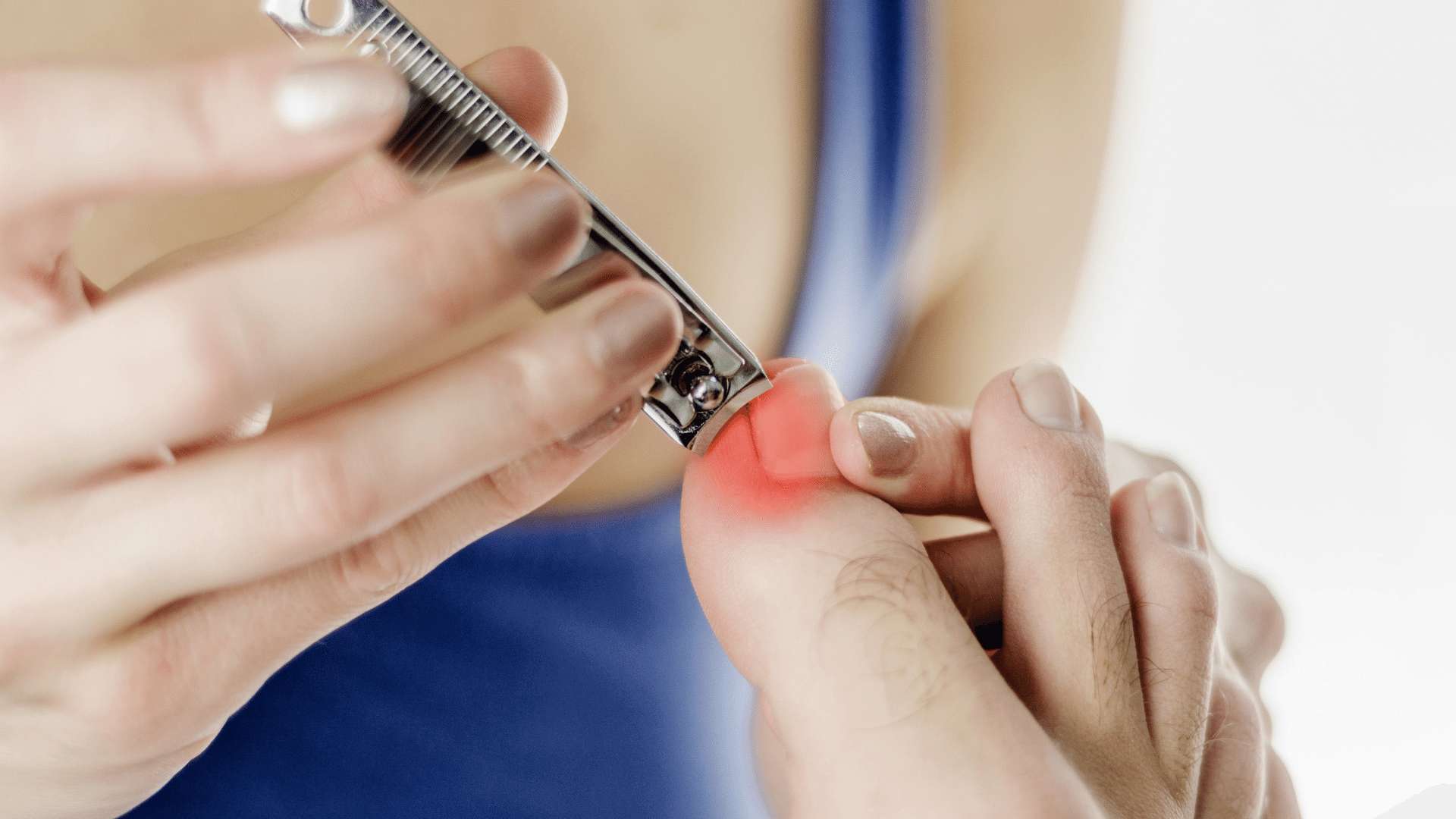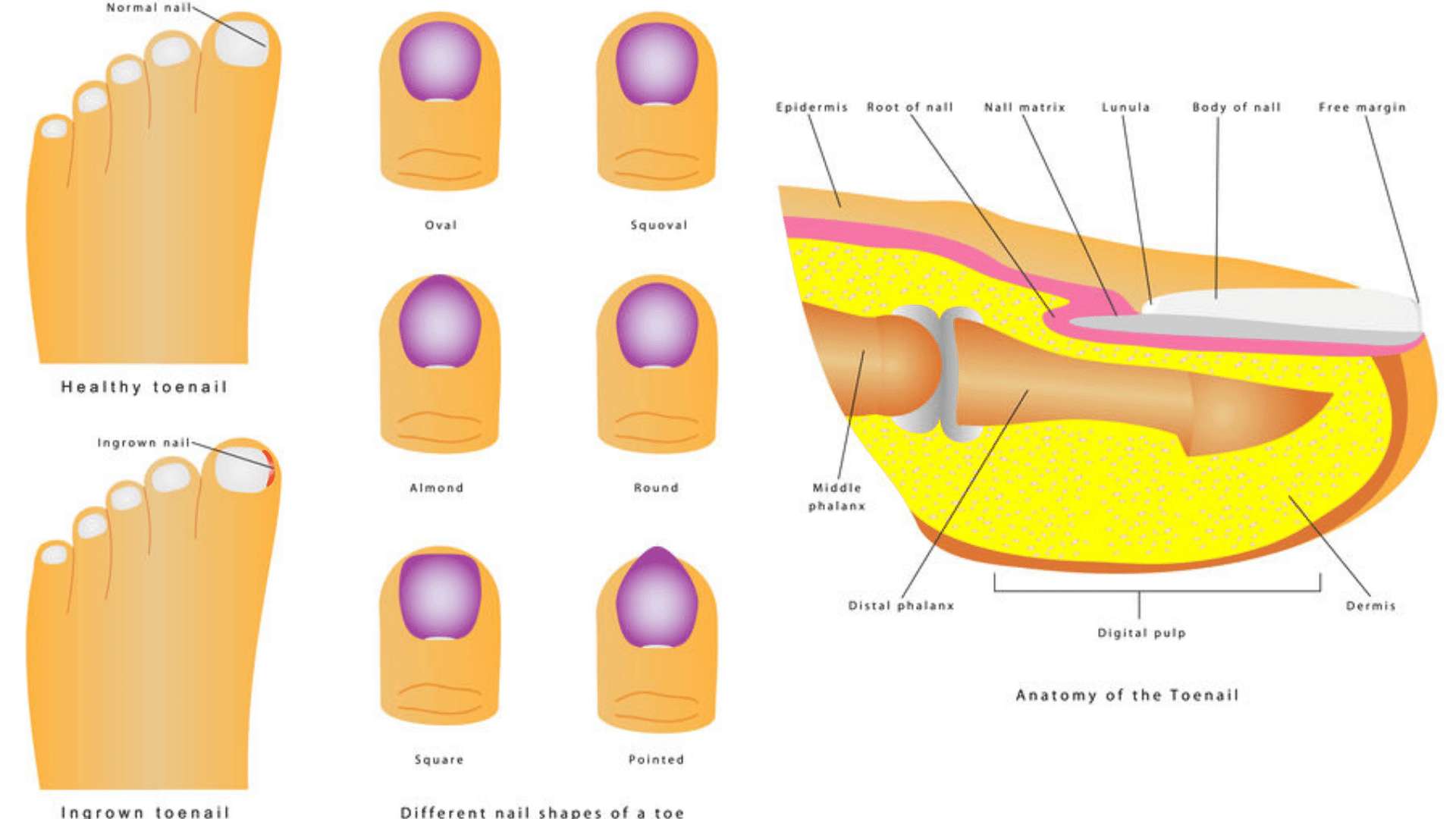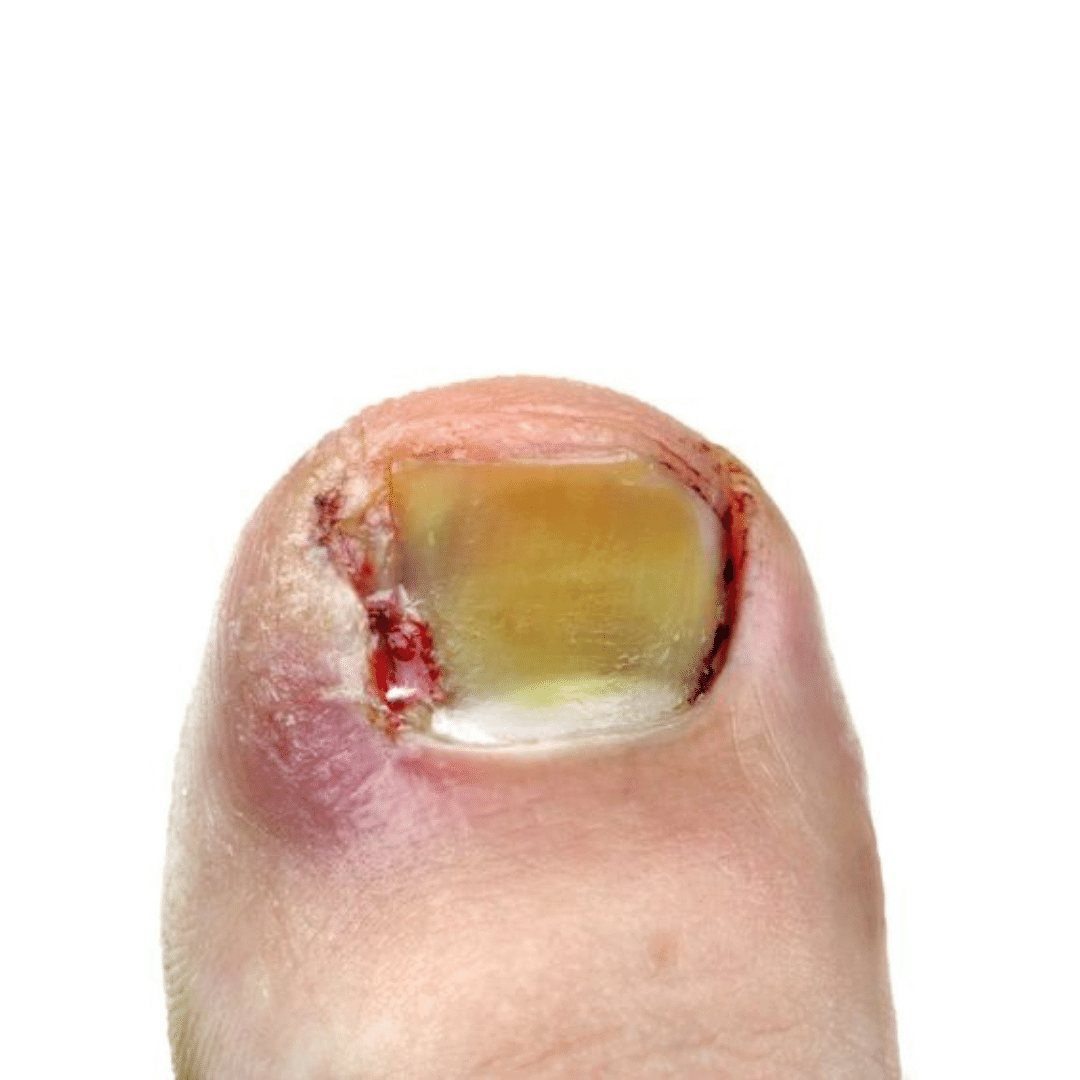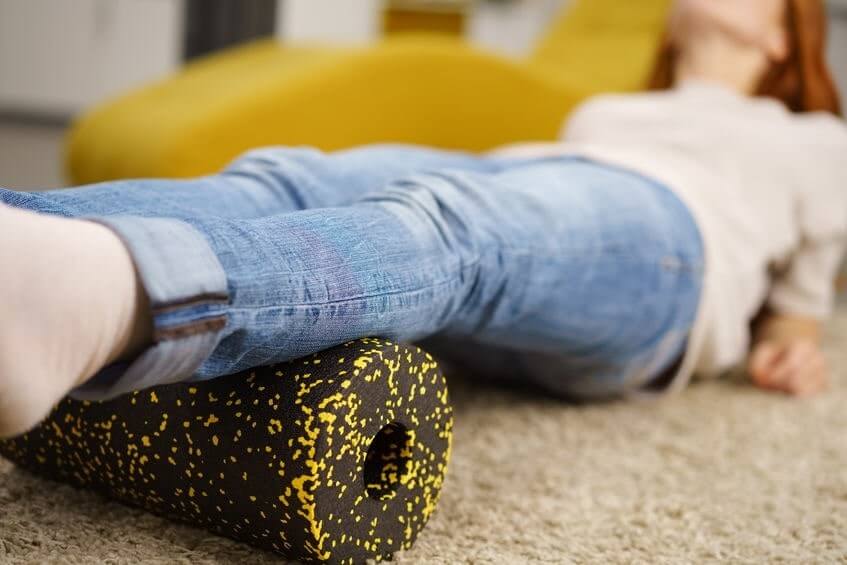
Jump to section
An ingrown toenail; onychocryptosis, is a common problem amongst people of all ages. They can interfere with your sporting activities, school or work, thus impacting your quality of life.
Ingrown toenails occur when the nail begins to protrude into the skin surrounding the nail or nail base. This causes trauma and inflammation, resulting in pain. Unfortunately due to trauma that the nail has caused to the skin, it creates a portal of entry for infections. If your toe becomes infected, this can increase your pain rapidly.
Your nails grow from the nail root that is located beneath the skin of your toe. This area is called the nail matrix and it can vary in size and shape. Your nails may produce a nail which is flat or curved, wide or narrow. Everyone is different.

Those people with curved or wide toenails are more prone to developing an ingrown nail, which occurs when the nail grows into the skin edges that surround it.
Apart from an abnormal nail shape, common causes for ingrown toenails include:
Ingrown nails may cause pain at the end of the toe or all along the edge. Apart from localised pain, ingrown toenails may also present the following symptoms:

Even though these features can quite successfully diagnose an ingrown toenail, your symptoms could also be a result of an involuted nail, a subungual corn or simply, a thickened nail. It is important to get an accurate diagnosis as incorrect treatment could damage the toenail, cause infections and worsen your pain.
Important Note:
If your ingrown nail is showing signs of infection;
You should seek out your GP or podiatrist immediately, as infections can turn from mild to severe quickly.
Home remedies
If minor and there is no signs of infection, you can try the following ingrown toenail home treatments to fix or decrease your pain:
In-clinic
If your ingrown toenail shows no sign of improvement after treating it at home, then it's time to consult one of our podiatrists in Brisbane.
At The Feet People, we have seen over 13,000 feet fixed and have been successfully treating ingrown toenails non-surgically and surgically. Even though ingrown toenails are a very common condition, it can be challenging to self manage, so it is very important to get a correct diagnosis and treatment plan which will suit your individual situation.
The goal of our initial appointment is to relieve pain and reduce any infection or inflammation that is a result of the ingrown toenail.
If your toe is not infected, we may be able to carefully trim the ingrown nail edge, without any discomfort. This is a non-surgical treatment of your ingrown toenail. We can continue doing this at regular intervals, usually four to six weekly, to prevent your ingrown toenails from flaring up.
Depending on the severity of the ingrown nail and whether or not your ingrown nail is recurring, we usually discuss a permanent solution — ingrown toenail surgery under local anaesthetic.
Common nail surgeries include:
If the nail bed is phenolised, 97% of cases do not reoccur.
Each procedure is painless as it is performed under local anaesthetic and the recovery time is minimal. Most people can return to work the
next day, as long as they are able to wear an open-toed shoe (e.g. sandals/thongs) for a few days.
Ingrown toenails are a painful condition and we need to do all we can to prevent ourselves from getting them. Unfortunately, you can't change your nail shape or avoid all external factors from increasing your risk. Hence not all ingrown nails can be prevented.
Nonetheless, there are a few things you can do to decrease your risk of developing ingrown toenails.

The more tense you (or your muscles, ligaments and all sorts of fibres) feel, then the more pain you will understandably perceive. Here are
three ways to help relieve this tension in your feet.

Not everyone needs orthotics, but they can play an integral role in treating or relieving pain in several foot and lower limb conditions.

The heat and humidity of an Australian summer makes it a prime time for issues to arise, so our newest podiatrist Lucy has put together
seven helpful tips to keep your feet healthy and problem free throughout summer.
| Monday | 7:40am - 6:00pm |
| Tuesday | 7:40am - 6:00pm |
| Wednesday | 7:40am - 6:00pm |
| Thursday |
7:40am - 6:00pm |
| Friday | TEMP CLOSED |
| Saturday | CLOSED |
| Sunday | CLOSED |
Ground Floor, 344 Queen Street,
Brisbane City QLD 4000
| Monday | 7:40am - 6:00pm |
| Tuesday | 7:40am - 6:00pm |
| Wednesday | 7:40am - 6:00pm |
| Thursday |
7:40am - 6:30pm |
| Friday | 7:40am - 5:00pm |
| Saturday | 7:40am - 4:30pm |
| Sunday | CLOSED |
Newmarket Village, 114/400 Newmarket Rd, Newmarket QLD 4051